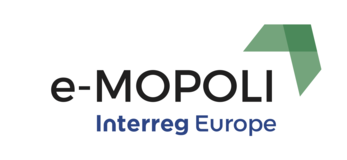One example of problematic is procedure to get construction permit. In Slovenia for example there are 355 areas protected under Natura 2000 framework. These areas are covering 37% of entire surface of the country of Slovenia. Due to very complicated procedures considerable part of investment funds and human resources are spent on getting permission to build, what make distribution system more expensive and increases also tariffs for network use. Procedures are taking up to 10 years. Can you imagine for someone who lives there or even have company, what it means to wait 10 years and more to increase power connection for generation or expansion of business?

Reduction of CO2 and other emissions is one of the main goals of energy transition. Question here is: how can distribution system operator contribute to this goal? Certainly energy efficiency is way of emission reduction and in this respect losses reduction is the best contribution distribution can give. However, since electric power system is indeed very efficient system there is not much reserve to reduce losses. They can be reduced by very flat consumption curve but renewable energy sources have quite the opposite effect. Since they generate a lot of power at the time of sun or wind or high water, all this energy need to be stored for use, when these sources are not available. They generate very little in the night or in the time of the year with limited wind or dry season. As we can see some of the countries, from project participants, are quite similar in losses and they are not so high comparing to other countries for example.

For sure theoretically losses in the network are at minimum level when there is no voltage in the network meaning when the network is de-energized. But this is not acceptable and it is not according to the power quality requirements and standards. Power quality parameters are very important for energy supply and not only shape of the voltage in the system, but also interruptions of power supply count. There are different influences on grid that affect this interruptions and bad weather conditions, winds, ice, snow, storms and so on cause outages. Here, if we compare the same five countries we see that Slovenia is not in the good position since there are quite many interruptions in power supplies comparing to the other western countries.

Question here is how to improve power quality and energy supply and support energy transition with much higher capacities of the network? What has been already explained before, when we compare the same countries we can find very clear linear relation between bad quality of supply and percentage of the network constructed with underground cables and not with the overhead lines. As we can see above Slovenia has relatively small part of the network in cables, this definitely affects quality and capacity of supply. It is clear from these diagrams that no smart solution can improve these parameters more efficiently then underground cables. So DSOs need support to bring network underground and essentially improve quality of supply and increase capacity of the network.



![[NEWS] Brescia: E-bike sharing in Brescia](/fileadmin/user_upload/tx_tevnewsevents/news/image_1664960602.jpg)
![[NEWS] Rogaland: battery-only high speed craft](/fileadmin/user_upload/tx_tevnewsevents/news/image_1664804367.png)
![[NEWS] BSC: promoting e-mobility in Gorenjska](/fileadmin/user_upload/tx_tevnewsevents/news/image_1660136312.png)
![[NEWS] BSC: new opportunities for cooperation](/fileadmin/user_upload/tx_tevnewsevents/news/image_1660136159.jpg)
![[NEWS] Rogaland: Solar power for electric airplanes](/fileadmin/user_upload/tx_tevnewsevents/news/image_1660135530.jpg)
![[NEWS] Bucharest: decarbonization of transports](/fileadmin/user_upload/tx_tevnewsevents/news/image_1656521459.jpg)
![[NEWS] Calabria: CENTRE FOR SUSTAINABLE MOBILITY](/fileadmin/user_upload/tx_tevnewsevents/news/image_1655983407.png)
![[NEWS] BSC: rental system network for bikes](/fileadmin/user_upload/tx_tevnewsevents/news/image_1655967495.png)
![[NEWS] Attica: Electromobility in Paiania](/fileadmin/user_upload/tx_tevnewsevents/news/image_1655110894.png)
![[NEWS] Attica: First e-bike festival in Athens](/fileadmin/user_upload/tx_tevnewsevents/news/image_1655110292.png)